Is Nuclear Power Green? Tackling Some Myths About Atom
Contrary to gut reaction, nuclear power is quite ecological and safe. It emits virtually no greenhouse gases and takes up little space in relation to energy yielded. Yet, due to a number of factors, lobbying included, nuclear power still gets bad rap.

The search for new energy sources and solutions for the energy system are of particular importance at present. People really shouldn't need a lot of convincing when it comes to decarbonizing our electrical grid.
The major argument is, of course, increasing severity of climate change caused by the accumulation of carbon dioxide in the atmosphere. For this reason, climate agreements are being introduced, mainly ousting coal-fired power plants. However, these efforts are moderately effective, and some countries, such as China, still obtain most of their energy from coal combustion.
Another important reason is the ongoing war in Ukraine. The ruthless attack on a sovereign country has forced the United States, the European Union, and many other countries to impose harsh sanctions. Unfortunately, this is a double-edged sword, as it results in limited supply and increased prices of goods exported by Russia – which isn't much, apart from fossil fuels.
Renewable vs. nuclear
In the face of high gas prices and the need to reduce coal consumption, we're willing to invest in the renewable energy sources. These are different ways of generating electricity that do not use fossil fuels. It has been assumed that, as a rule, renewable energy sources are ecological – they have zero or very low carbon dioxide emissions.
The two most popular renewable sources of energy are currently wind and photovoltaics. Less common are geothermal and hydropower plants. Unfortunately, some countries, for unclear reasons that either have something to do with Chernobyl, or fossil fuel industry lobbying, do not consider nucler energy as viable solution for net-zero electricty.
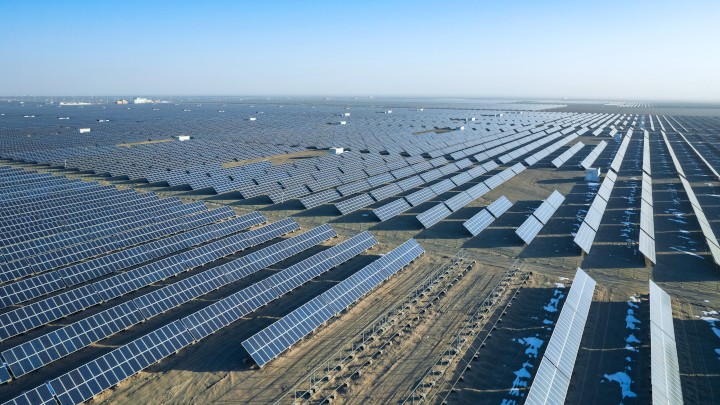
Germany, for example, intends to restart some closed coal-fired power plants in connection with the gas crisis, which is ironic considering the country has (until recently) insisted on other EU members shutting their coal plants. Still more surprisingly, they've got quite a few nuclear plants that were recently decommissioned, but no one seems to remember about them in Berlin. This may be the result of creating an irrational fear of nuclear energy and sowing doubts about its ecological validity.
Is this perception of nuclear energy correct? We tried to tackle the very problem of atom's safety in another article; here, we will mainly explain what makes nuclear fusion a "green" energy source. Anyway, a decision in accord with the above thesis has recently been made by the European Parliament, which declared nuclear power as indeed ecological way of obtaining energy (on a par with natural gas, which may raise a few brows).
The nuclear power plants are ecological
First of all, it's virtually zero-emission. Although it may look like nuclear facilities emit smoke, it in fact is pure water vapor. It comes from cooling towers, where the water coming from the steam turbine feed is cooled.
Nuclear power plants emit almost no greenhouse gases – their score in terms of emissions is, in fact, comparable to PV. (As illustrated by chart below – source). Interestingly, gas power plants are also on the European "green" list, and yet they do emit exhaust fumes, as can be seen below.
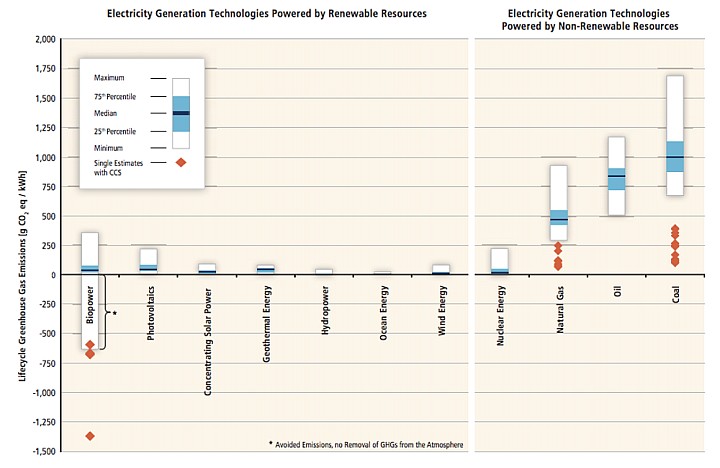
The construction of a nuclear power plant itself, although quite costly, doesn't generate additional emissions beyond those expected from a large construction investment (production of cement, for example, is notorious for its environmental impact). Nuclear reactors seem a very high and complicated technology, but contrary to appearances, it doesn't take sophisticated, or even worse – toxic materials to build them.
It's basically just another large structure made of concrete and steel. The reactor block must be quite thick, nowadays multi-layer protective jackets are also used, hence a lot of concrete is needed. In the reactor itself, we can find some rarer materials, such as graphite or zirconium. But we still will not find anything that could, for example, pollute the groundwater under the facility.
High yield, small footprint
However, one of the crucial factors speaking in favor of nuclear power is its area efficiency. They're generally large complexes, but the required area is very small in relation to the amount of electrical power that can be obtained from such a plant. A single reactor can produce up to 1,300 MW. For comparison, a medium-sized wind turbine has an installed capacity of about 2 MW.
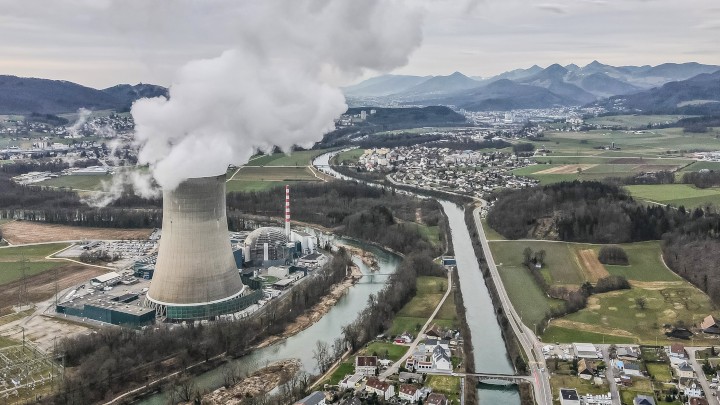
Generally, power plants have 2, 4 or 6 reactors, so it's easier to measure their capacity in gigawatts. Generally, the total power of such a facility is between 3 and 8 GW. The construction of only one nuclear power plant with an area of up to several square kilometers can already significantly contribute to the energy capacity of the entire country.
Nuclear energy is currently the most efficient source of energy in terms of the required area. While it does affect the landscape in an arguably significant way (the cooling towers are visible from a distance) it takes incomparably less area than a coal mine, producing greater amounts of energy at the same time.
Savings in logistics
The average nuclear reactor consumes about a dozen tons of nuclear fuel annually. Fuel bundles are generally replaced every 12-24 months. This means that a regular power plant only needs a few shipments related to refuelling (e. g. a few train wagons) a year. Meanwhile, one block of a coal-fired power plant burns through more than a hundred wagons of coal every single day.
A traditional power plant requires trains full of coal to run almost non-stop to feed it. Compared to such level of consumption, a nuclear power plant may seem like it requires almost no fuel at all.
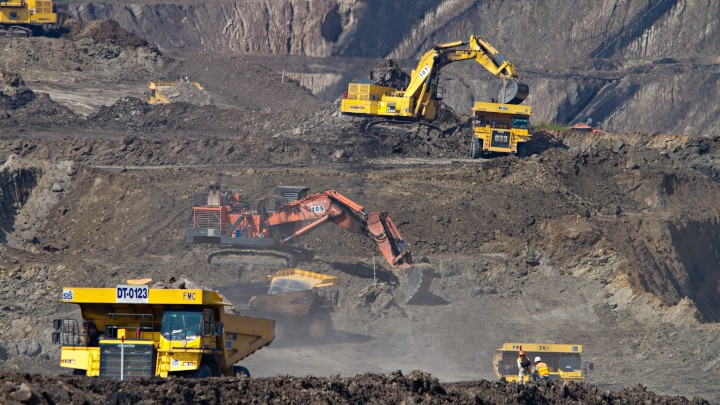
In terms of logistics, it saves a lot of time, fuel and means of transport. In terms of logistics and transport, only used nuclear fuel sometimes requires special organization of traffic for safety reasons. Fortunately, this happens occasionally.
The infamous radioactive waste
Radioactive spent fuel is the proverbial water for the mill of atomic energy opponents. In reality, utilization of spent fuel does pose a few challenges, but the problem is generally smaller than we usually believe. According to some, radioactive products of fission is a sufficient argument not to call nuclear power "green."
Indeed, answering whether a substance that produces no additional pollutants nor greenhouse gas emissions is or is not "green" is a matter of some debate. What begs attention here is that the amount of spent fuel isn't huge, and basically the only requirement for handling it is a suitable storing location. There also is the matter of spent fuel's half-life.
It is true that the complete decay of radioactive isotopes can be counted even in millions of years. In fact, spent nuclear fuel ceases to be dangerous after a period of approx. 300 years. The decay processes still take place in it, but the emission of ionizing radiation they generate is no longer strong enough to threaten living organisms.
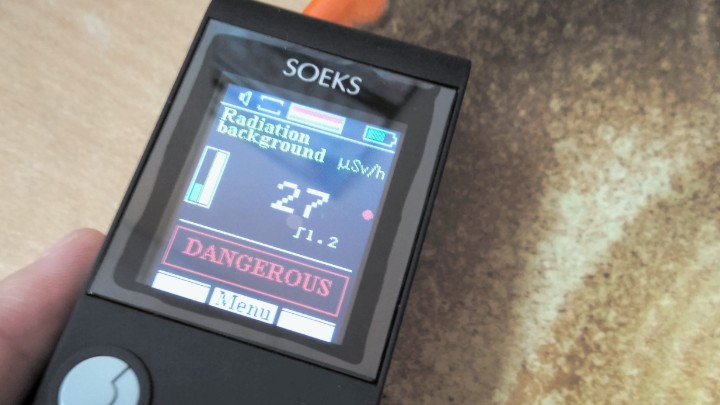
Ionizing radiation itself also doesn't pollute the atmosphere nor generate greenhouse gases. In fact, we are constantly exposed to radiation, albeit in small amounts – unless we're talking downtown LA. Radioactive contamination can arise from transportation of radioactive particles – in the form of dust. The spent fuel, however, can be properly sealed and protected, and should be vitrified (geomelted), i.e. glassed, so that it cannot escape in form of nano particles aka dust.
On top of that, nuclear waste can be recycled to a large extent. The process isn't as effective to qualify nuclear energy as renewable energy, but the specificity of isotope transformations allows for the recovery of most of it, and more importantly – the recovery process itself also allows for simultaneous production of energy.
1

Author: Arkadiusz Strzala
His adventure in writing began with his own blog and contributing to one of the early forums (in the olden days of Wireless Application Protocol). An electrical engineer by profession, he has a passion for technology, constructing and, of course, playing computer games. He has been a newsman and writer for Gamepressure since April 2020. He specializes in energy and space tech. However, he does not shy away from more relaxed matters every now and then. He loves watching science-fiction movies and car channels on YouTube. He mainly plays on the PC, although he has modest console experience too. He prefers real-time strategies, FPS and all sorts of simulators.
Latest News
- „It's a brave decision.” Former Rockstar director praises Larian for walking away from Baldur's Gate
- Pathfinder devs are working on their own launcher, but some players are not happy about that
- Game of the Year 2025 devs underestimated their work. „Most of us were aiming at around 80”
- Steam has revealed the biggest winners of 2025. Game of the Year didn't make the list
- Clair Obscur players see „inspiration” from Game of the Year 2025 in a new title from China, much to the annoyance of jRPG fans

